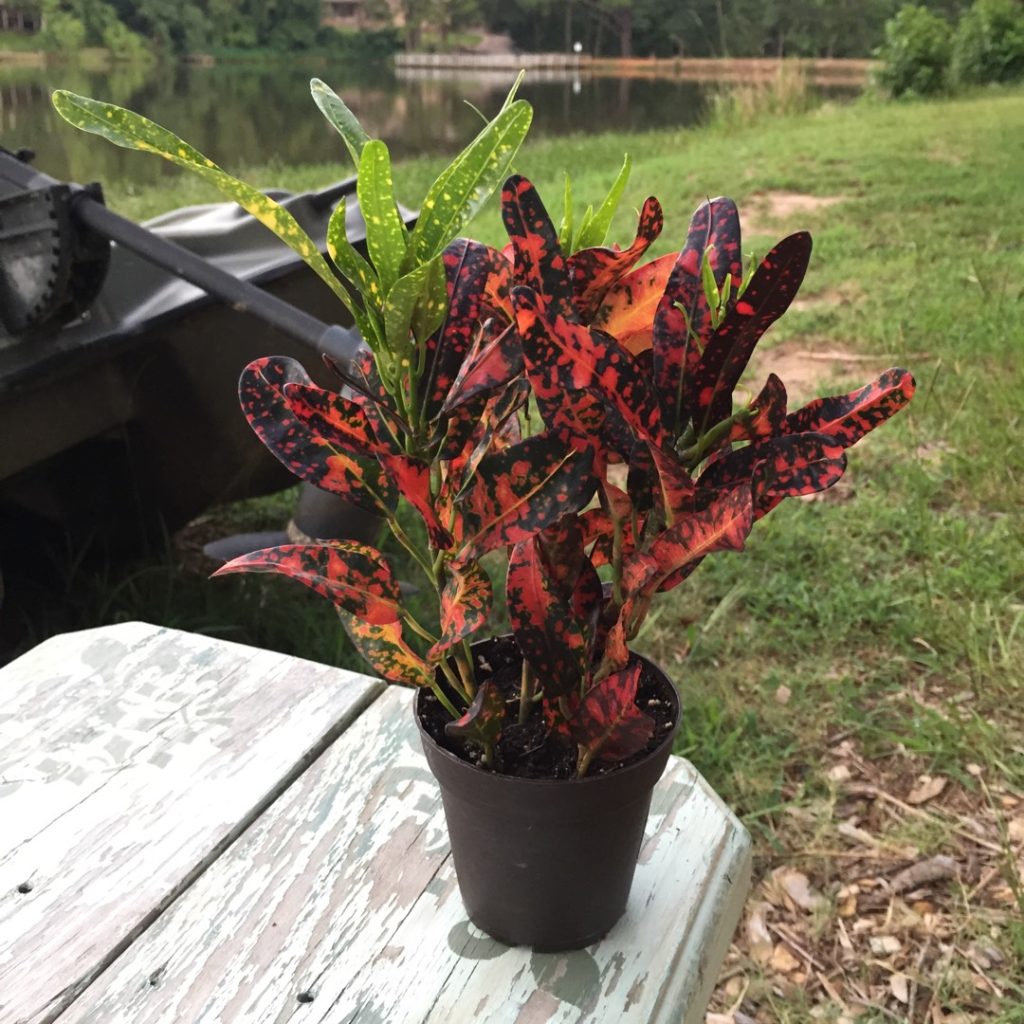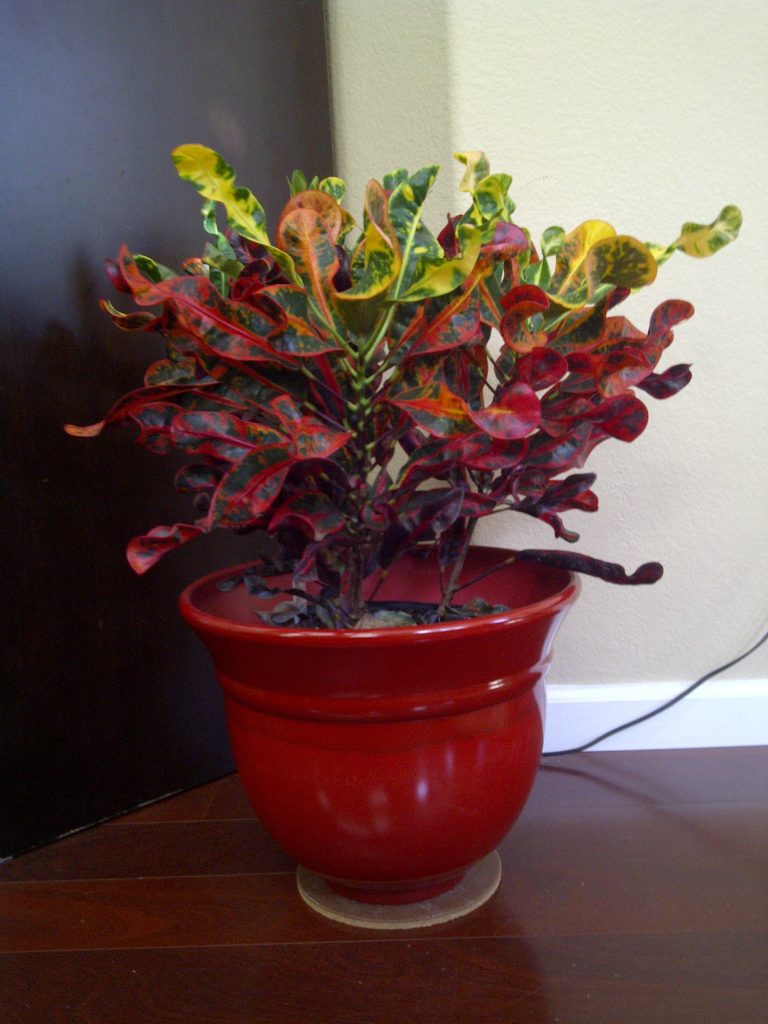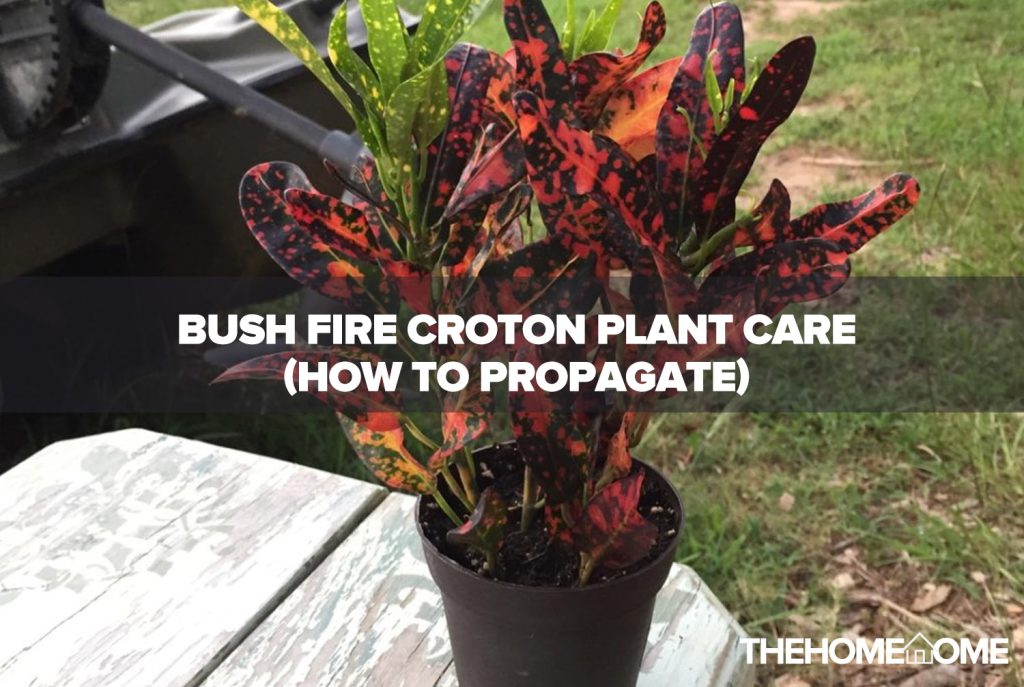Croton, commonly known as Codiaeum Variegatum, is one of the greatest houseplants available. It is one plant that one would never tire of viewing or growing, thanks to its stunning variegated hues and numerous plant types.
The variety of this plant makes you want to purchase and learn more about the lovely colors and beauty it provides to the environment. Croton plants, which are perennial, can reach a height of ten feet and thrive throughout the year.
Another advantage of the croton houseplant over others is that it is reasonably easy and inexpensive to care for, and you will not have to break the bank to do so.
Bush Fire Croton Plant Explained
The bush on fire croton is another lovely species of croton houseplant to look into. This plant can be found on the islands of the western Pacific Ocean, Malaysia, and Sri Lanka. One fascinating aspect about this specific croton is that its leaf can come in a variety of colors, including red, orange, gold, and green.
Although the hues of this plant might change as it ages, it should be kept in strong but indirect light. The Bush on Fire Croton enjoys water and should be watered regularly, but not excessively to avoid disease.
If you’ve been wondering how to care for and propagate your croton plant while learning more about them.
| Plant Name | Bush on fire croton |
| Plant Family | Euphorbiaceae |
| Botanical Name | Codiaeum variegatum |
| Life Cycle | Perennial |
| Classification | Tropical plant |
| Size | 6 to 10 ft |
| Fragrance | Non-fragrant |
| Soil Type | Adequately drained soil |
| Soil Ph | Neutral |
| Native | Southern India, Indonesia, Sri Lanka |
| Light | Limited sunlight and half shade |
| Toxicity | Somewhat poisonous |
| Foliage Color | Gold, red, orange, and green |
How to Propagate The Bush On Fire Croton
Propagation is an indispensable process in planting and growing crotons. It is a method whereby the croton plants can be multiplied and this process is not just for the experts but also for an average croton lover like you.
The most popular methods are air layering and stem cutting, and you can either make use of soil in a pot of water in a container to achieve the results you desire.
Follow this guide as we enlighten you on the steps to propagating your bush on fire croton plant with just water. You should note that although it is relatively slower to grow the crotons than using soil, you can use this process for the other varieties of your croton.

Items Needed
- A healthy bush on fire croton plant
- sterilized shears
- Clean Water
- Container
- hand gloves
Propagation Steps
This is a step-by-step instruction on how to propagate your bush on fire croton.
- First Step: Gently cut off the croton stem or leaves off the plant using your hand gloves and shears. It’s critical to wear your hand glove while doing this to avoid skin irritation from the sap.
- Second Step: Fill a small container halfway with clean water and make sure it’s at a comfortable level for the roots.
- Third Step: Place the stem or leaves in the container and keep it in a light location.
- Fourth Step: Ensure that the leaves receive three to four hours of sunlight every day and that the water is changed at least once a week.
- Fifth Step: The leaves should have formed excellent roots after forty days, however, some leaves may not have done so.
- Last Step: Place the leaves or stem in a pot with appropriate soil and start caring for your croton plant.
Care Tips For The Bush On Fire Croton
Even though this lovely houseplant is easy to grow and maintain, there are certain things to keep in mind when caring for the bush on fire croton. We’ve gathered some information about croton plant care that you might find useful.
1. Light
This plant requires a minimum of 4 hours of direct sun each day. If there is a lack of sunlight, the leaves will become long and look unattractive. You can place the houseplant on the east side of your window and note that when there is direct and excessive sunlight, it will cause sunburn for the leaves which will lead to discoloration of the leaves.
2. Watering
Like other croton plants, the bush on fire croton requires moderate watering. Because it is a tropical plant, croton plants should be hydrated. When the leaves become too dry, they wither, which might lead to the plant’s demise.
Watering your leaves thoroughly will strengthen the roots, but this can only be done if the soil and pot are well-draining of water to avoid excessive water storage, which can cause root rot.
3. Fertilizer
Croton requires fertilization several times each year to thrive. To keep your croton from dying, avoid overfeeding it with fertilizers. You’ll need to dilute the fertilizer with water and possibly half the suggested quantity. You should try granular fertilizer, which gently distributes fertilizer on top of or combined with the soil.
During the winter, fertilizer is not required for your plants, but it is very helpful for the croton plant during the summer or spring.

4. Soil
Croton plants prefer soil that drains properly. The soil should be damp but not soggy; else, the plant will succumb to illness. If the soil is too dry or too damp, the leaves will fall off. Dip your finger into the soil or simply place your hand over it to determine the moisture or dryness of the soil.
Water sparingly, if it is too dry and if it is too wet, wait for the water to dry out before watering. The croton houseplant thrives in loamy soil.
5. Humidity
Tropical plants like the bush on fire croton, thrive in a humid atmosphere. When the environment is excessively dry, the plant will not be able to absorb enough moisture to grow properly, resulting in stunted growth.
A humidifier or, better yet, elevating the flower pot over a stone with water beneath it can work well in a low-humidity environment. This will keep the leaves moist and the croton plant growing in a humid environment.
6. Pruning
This care is necessary for the croton plant’s preservation and stable growth. You should prune your bush on fire croton to get rid of any diseased or dead foliage. Sanitize your shears as well to avoid disease transmission to other parts of the plant.
7. Temperature
The bush on fire croton plant should be secured from extreme temperatures. These plants will only survive outdoors where temperatures do not normally drop below 10°C in winter. If the temperatures are extreme, the leaves will wilt and cause damage to the plant.
Growing Tips
- Mist the croton plant on a regular basis to keep it moist and aid in the growth of healthy leaves.
- When potting your plant, choose a pot that will not readily fall over when the croton’s weight increases as it grows.
- When cultivated outside, the croton plant has a proclivity for attracting dust. At least once a month, wipe your foliage with a damp towel.
- The croton plant enjoys water but dislikes being flooded. To avoid being dry or waterlogged, be cautious when watering your plant.
- If you’re going to use a humidifier to help your plant retain moisture, make sure it’s free of essential oils to avoid any negative effects on the plant.
Frequently Asked Questions
Can I revive my dying croton?
Is it necessary for me to prune my plant?
Conclusion
You don’t need flowers to make your indoor decoration garden colorful with the bush on fire croton. This croton’s vibrant and variegated tones are enough to provide color to your surroundings.
We’ve shown you how to care for and reproduce this plant in this article. Indoors or out, just make sure you select a comfy spot for the croton to thrive, and once it’s in place, the bush on fire croton shouldn’t be moved around too often.
